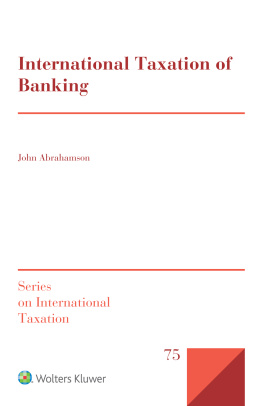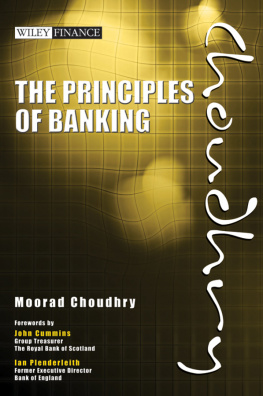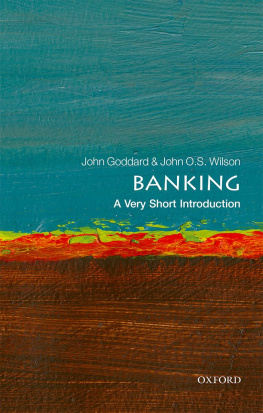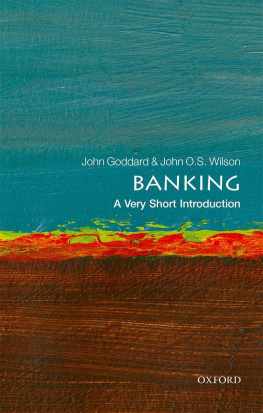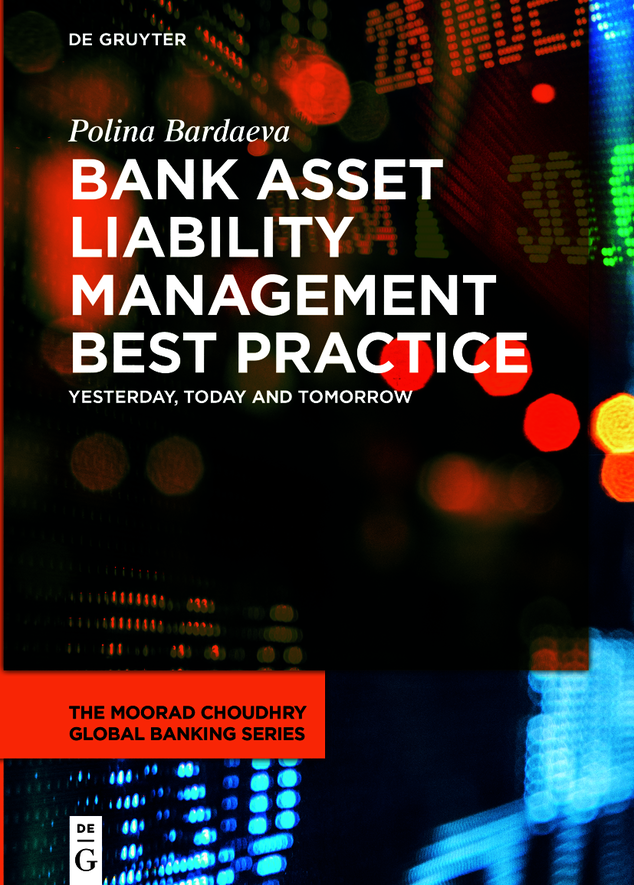The Moorad Choudhry Global Banking Series
Edited by
Moorad Choudhry
ISBN 9783110666540
e-ISBN (PDF) 9783110669763
e-ISBN (EPUB) 9783110666601
Bibliographic information published by the Deutsche Nationalbibliothek
The Deutsche Nationalbibliothek lists this publication in the Deutsche Nationalbibliografie; detailed bibliographic data are available on the Internet at http://dnb.dnb.de.
2021 Walter de Gruyter GmbH, Berlin/Boston
To my parents
Acknowledgments
First of all, I want to thank my parents, Elena and Sergey; they defined who I am, my principles, understanding of right and wrong, how to set aims and how to achieve them. You have always believed that I can exceed my goals and that inspires me to new achievements. All my success I owe to you! Thank you for your love and devotion.
I was very lucky to have Oxana Baydina as my university supervisor. Thank you a lot for taking me on this journey called academic work, educating me on how to structure thoughts, stimulating my own research, helping me with always relevant advice and supporting me in times when I got stuck and didnt know how to continue. I want to thank also my alma mater Moscow State University for opening the doors to my professional life.
I would like to thank those who actually brought me into the ALM management profession Timofey Kovalkov and Mikhail Toporov. Thank you for your enthusiasm and full involvement in this topic, and for showing me this area of banking, with which I fell in love at first sight.
And if there is a person, about whom I can say that without him this book would never be a reality, that is Moorad Choudhry. I can describe this only as a miracle, that I was able to actually meet the person whom I admired while writing my PhD thesis, but also that he gave me the chance to cooperate with him in his projects! A big thank you for this opportunity, as well as for your motivating support, and for setting really high quality targets and leading by example in meeting them.
I also extend my thanks to all my colleagues from Sberbank Europe AG (especially to Kornel Halmos, Ivan Mirgorodskiy, Leonhard Riebl, Aleksandr Mikayelyan and Peter Niemiec for the constantly appearing ALM challenges which we discuss and solve together) and also to my ex-colleagues and friends, including Yulia Zaytseva, Massimo Pedroni, the BTRM team (Edward Bace, Chris Wescott, Chris Uduezue, Werner Coetzee), and Sberbank of Russia Treasury (in particular Alexey Lyakin, Iya Malakhova, Maria Volozhinskaya, Anton Sorokin, Elena Chistyakova, Alexandr Letunov).
Thank you to Anuk Teasdale for undertaking the first and the most hard proof read and to the De Gruyter editorial team, and especially to Jaya Dalal, for always having an optimal solution with regards to the book. Im also thankful to Mervin Ebenezer and Integra Software Services for handling the production of the book.
Finally, Im very happy to have Andrey Kurdyumov in my life, to whom I say thank you for being here, and for making me confident in what Im doing and in the happily ever after.
Foreword
This is a very timely, topical and comprehensive exposition of asset and liability management (ALM) for financial institutions by Dr. Bardaeva. It builds substantially upon prior works, including the 2007 volume by Professor Moorad Choudhry and her own 2011 text, but expands considerably upon the all-important function of ALM and the overriding imperative for it to be firmly established in financial institution processes and procedures. The author, currently heading Group Capital Management for Sberbank Europe AG, brings her decades of banking and ALM experience solidly to the fore in outlining current best practice and in looking forward to a sustainable future for the industry. She is prescient in her ability to identify and suggest benefits from new and emerging trends in innovative ALM practices.
As a faculty member colleague in the Bank Treasury Risk Management programme (BTRM), I have regularly observed and learned from her, as she most ably embeds and reinforces high standards of professional practice in ALM among numerous cohorts of bank practitioners at all levels. She very rightly focuses in this opus on key fundamentals such as the crucial significance of the balance sheet, the treasury operating model, the salient relationships that exist between it and the risk, market and finance functions, and she thoroughly covers the Supervisory Review and Evaluation Process gaining ever more attention among regulators. This discussion extends significantly and in a holistic manner to relevant considerations of governance, capital, liquidity and funding. The regulatory aspect is indeed amply explored, with very useful suggestions as to how to optimise this dynamic. Particularly compelling is the incisive discussion around the wider role that ALM plays in response to new challenges to the industry, as well as conflicts of interest to be avoided. In this accomplished and clearly written work Dr. Bardaeva further demonstrates her expertise in constructing the internal yield curve for an institution, which has critical implications for profitability.
This book is a highly noteworthy addition to the growing corpus of literature on best practice in the banking industry, and the too often overlooked area of ALM. It is to be warmly welcomed by both professional and academic practitioners in the field, as well as by those who are simply just setting forth on their ALM journey. I heartily recommend it.
Dr. Edward Bace
Middlesex University Business School
5 January 2021
Preface
When looking back at the history of banking, in almost every decade the banking business has faced dramatic changes. Bankers, who successfully survived one or more banking crises, start to think that they have learned the lessons from the past as they incorporated abounding and complicated mechanisms in their usual banking activities. But then one more crisis comes along and threatens the banks sustainability again. Why are we still so exposed to negative external implications? And what can we do to protect ourselves and our banks from new shocks? And will we ever return to the 3-6-3 principle, when bankers left the office at 3 p.m. to play golf (see interpretation in Chapter 1)?
I believe that as long as a dominant approach across banking addresses problems separately, banks will be failing to confirm the viability of their business in the long run. The crucial point in banking is understanding the interconnections between its areas. Asset and liability management (ALM) stands exactly at the crossroads of almost all banking functions, and its impact should never be understated. Proper and timely ALM involvement in banks processes significantly increases the efficiency of the entire bank. The ALM discipline embraces not only the setting of balance sheet targets, instruments, and methodologies to achieve the goals, but also a correct, holistic understanding of procedures that should be set up in a bank to prove the ongoing continuity of its operations and compliance with internal and external constraints. In this book my aim is to show that if undertaken correctly, ALM will almost rule the bank, enabling the bank to fulfill its mission, to be in line with regulatory requirements and to maintain long-term financial health.
After working for 15 years in ALM, mastering my skills in one or another ALM topic and sharing them with my students, I have concluded that ALM is not just a set of methods and instruments (although it is very important to know these). Its dedication goes much further. In contrast to many previously published books on bank ALM, this text provides the philosophy of ALM, describes how through time it has adapted to a changing environment and become more involved in steering the bank. This book raises the question of interrelation of processes inside the bank, suggesting that we manage the bank almost as a human organism, considering that a change in one item would also impact other areas. It also suggests that improving one banking function will positively influence the entire bank.



